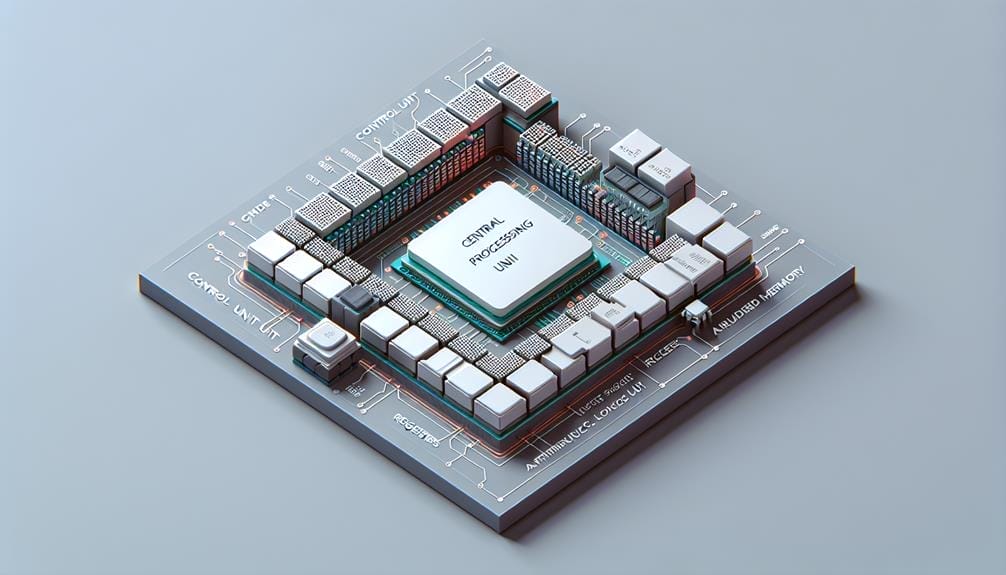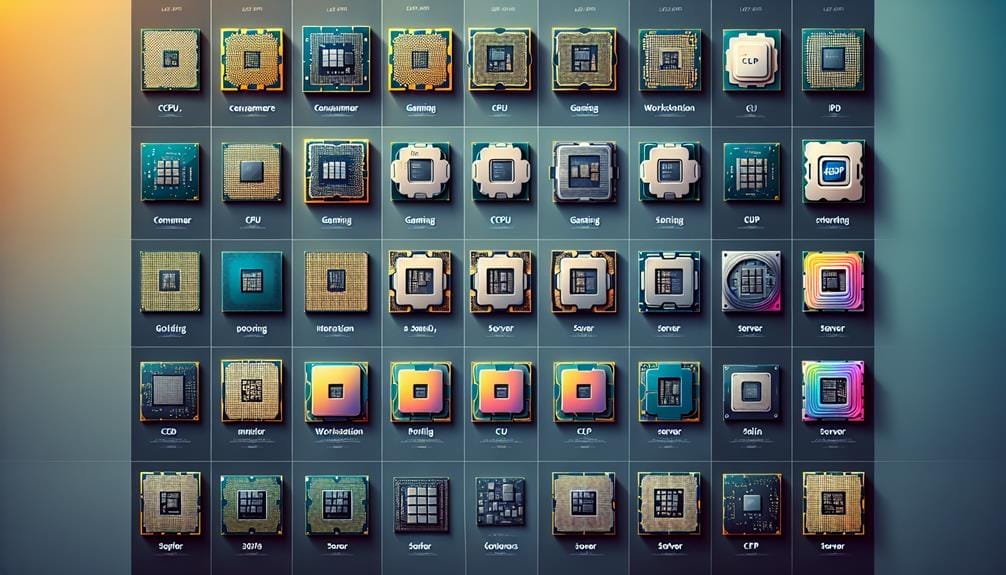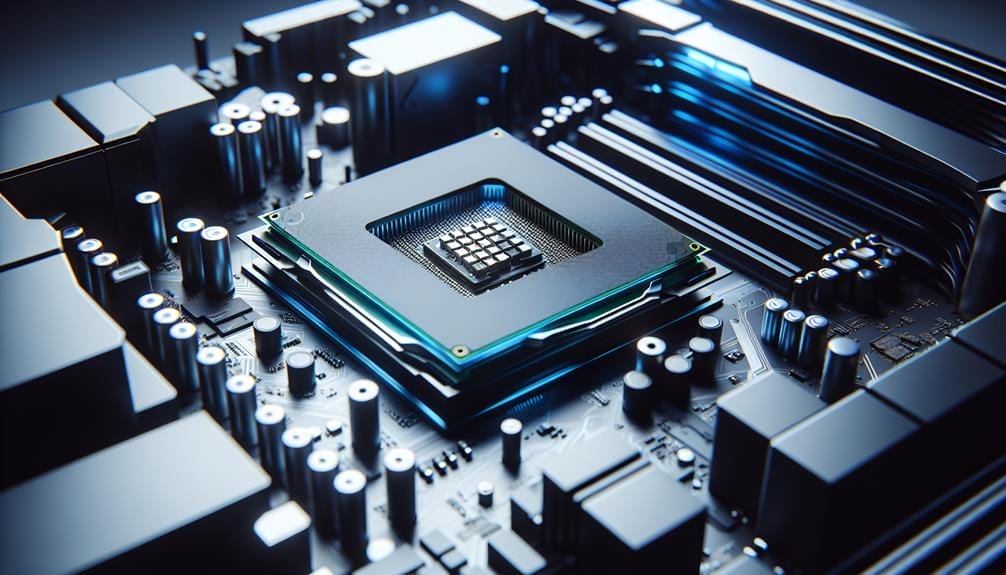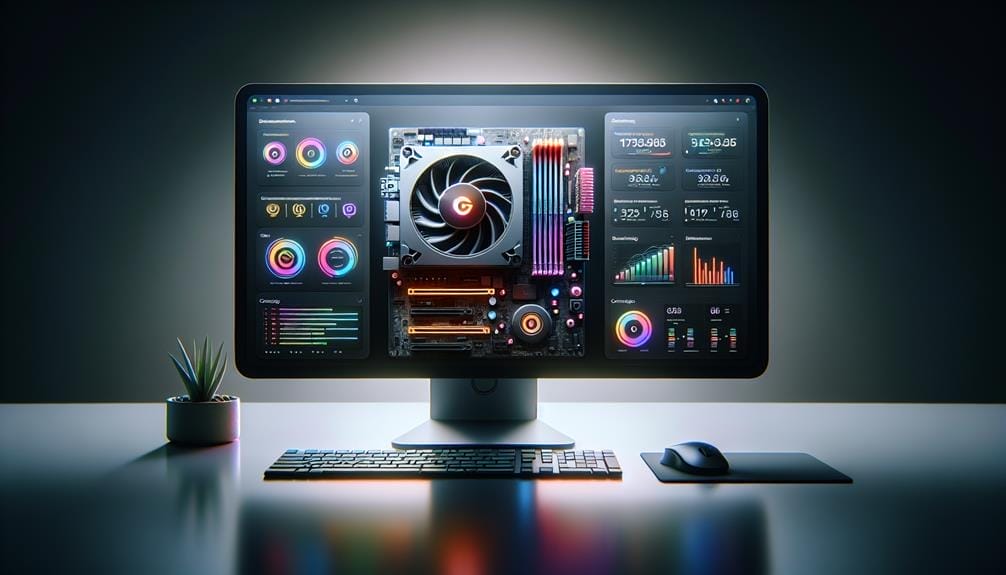Unraveling the World of Modern Processors

The domain of modern processors is complex and ever-changing, influenced by various factors that determine their performance and capabilities. From the fundamental architecture of CPUs to the different models present in the market, along with the fierce competition among leading companies in the field, there is much to explore in this intricate topic.
As we embark on this exploration, we will uncover the intricate nuances of core/thread architecture, the implications of overclocking, and the distinct attributes that cater to diverse computing needs across various market segments.
Additionally, we will delve into the performance differentials between Intel and AMD processors, offering valuable insights for a range of computing tasks. Furthermore, we will shed light on the relevance of ARM CPUs in mobile devices, and the omnipresence of x86 and x86-64 instruction sets in desktop and laptop computing.
Key Takeaways
- CPUs are composed of one or more processing cores.
- Multi-core CPUs have become the norm, offering increased IPC and core counts.
- CPUs can be overclocked for higher frequency, but this requires more voltage and generates more heat.
- Different CPU types cater to different market segments, from mainstream to server and high-end desktop CPUs.
Understanding the Basics of CPUs

Understanding the basics of CPUs is essential for anyone looking to comprehend the inner workings of computer hardware and the performance capabilities of different processors.
Overclocking CPUs can provide benefits such as increased processing speed and performance, but it requires careful consideration of heat management and voltage requirements.
Multi-threaded CPUs, such as those utilizing Intel's Hyper-threading or AMD's SMT technology, have a significant impact on different workloads. They can enhance the performance of tasks that can be parallelized, such as rendering and streaming, by increasing the available bandwidth for simultaneous execution of tasks and instructions.
However, the impact of multi-threaded CPUs on various workloads is dependent on the specific nature of the application.
It is crucial to consider these factors when evaluating the suitability of a processor for a particular use case.
Exploring CPU Core and Thread Architecture
In light of the fundamental considerations for CPU performance and capabilities, an exploration of CPU core and thread architecture is essential for comprehending the intricacies of modern processor design.
Exploring thread scaling provides insight into how effectively a CPU can handle increasing numbers of threads, impacting its ability to manage multiple tasks concurrently.
Additionally, discussing the performance impact of hyper-threading, a technology employed by Intel, is crucial. Hyper-threading allows a single physical CPU core to simulate two logical cores, potentially enhancing multitasking performance.
Understanding these aspects of CPU core and thread architecture is vital for users seeking to optimize their systems for diverse workloads and demanding applications, as it directly influences the overall processing capabilities of a modern processor.
Navigating CPU Types by Market Segment

Navigating the diverse landscape of CPU types by market segment requires a comprehensive understanding of the distinct performance characteristics and targeted applications of mainstream, server, and HEDT processors.
When evaluating CPU performance, it's crucial to consider the following:
- Mainstream CPUs: These processors offer high IPC and affordable prices, making them popular among a broad consumer base.
- Server CPUs: Designed for enterprise-grade tasks, server CPUs feature higher core and thread counts to handle demanding workloads efficiently.
- HEDT CPUs: Occupying a middle ground, HEDT processors, such as AMD's Threadripper and Intel's Core i9, boast high core counts and are ideal for tasks that demand more power than mainstream CPUs but are not as intensive as server-grade workloads.
When comparing server and workstation CPUs, it's essential to prioritize the specific requirements of the intended tasks.
Delving Into CPU Overclocking Capabilities
Exploring the realm of CPU overclocking capabilities requires a thorough understanding of the intricacies involved in maximizing clock speeds and system performance.
When delving into CPU overclocking, it is essential to explore optimal cooling solutions for overclocking. Efficient cooling is crucial to dissipate the increased heat generated by the higher clock speeds.
Additionally, understanding the impact of voltage on CPU overclocking is paramount. Increasing voltage can help stabilize higher clock speeds, but it also leads to greater heat production and power consumption, necessitating robust cooling and power delivery solutions.
Achieving a stable and effective overclock requires a balance between increased voltage, enhanced cooling, and the overall capabilities of the CPU. This delicate equilibrium is sought after by enthusiasts aiming to push the limits of their CPU's performance.
Evaluating Intel and AMD for Gaming

When considering the optimal CPU for gaming, it is essential to evaluate the performance and suitability of Intel and AMD processors, particularly in relation to their gaming capabilities and overall system efficiency.
Evaluating Intel and AMD for Gaming
- CPU Performance: Both Intel and AMD offer high-performance CPUs suitable for gaming, with Intel often excelling in single-core performance and AMD providing strong multi-core performance.
- Power Efficiency: AMD's CPUs are generally more power-efficient, offering competitive performance while consuming less power, which can be beneficial for gamers seeking energy-efficient systems.
- Cost-Effectiveness: When comparing CPU performance and power efficiency, AMD processors often provide better cost-effectiveness, making them an attractive option for gamers on a budget.
Indeed, evaluating Intel and AMD for gaming involves considering various factors to ensure the best gaming experience while maintaining system efficiency.
Selecting CPUs for Live-Streaming and Gaming
Selecting the appropriate CPU for live-streaming and gaming requires a careful consideration of both processing power and multitasking capabilities. When analyzing the impact of clock speed on gaming performance, it's essential to explore CPU cooling options to ensure optimal thermal management.
For live-streaming and gaming, CPUs with high core counts and simultaneous multithreading capabilities are advantageous, as they can handle the demands of both tasks effectively. Additionally, CPUs with higher clock speeds can provide smoother gaming experiences and better frame rates.
It's important to note that while Intel CPUs are generally recommended for gaming, AMD CPUs are increasingly popular for live-streaming due to their competitive performance.
Ultimately, the selection should align with the specific needs and budget of the user, taking into account factors such as power consumption and compatibility with other system components.
Assessing CPUs for Editing and Productivity

In the realm of editing and productivity tasks, the focus shifts from the impact of clock speed on gaming performance to the evaluation of processing power and multitasking capabilities essential for efficient workflow management.
When assessing CPU performance for editing and productivity, understanding CPU benchmarks becomes crucial. Here are three key factors to consider:
- Processing Power: Look for CPUs with high single-core performance and multi-core capabilities to handle demanding editing software and multitasking efficiently.
- Multithreading Support: Consider CPUs with simultaneous multithreading (SMT) or hyper-threading, which can significantly enhance multitasking performance for productivity tasks.
- Efficient Workflow Management: Choose CPUs that offer a balance of high clock speeds, core counts, and cache sizes to ensure smooth and responsive performance while handling multiple editing and productivity applications simultaneously.
Unveiling the World of ARM CPUs
The world of ARM CPUs is a dynamic and rapidly evolving landscape. They are characterized by their widespread presence in mobile devices and an increasing foothold in other computing domains. ARM processors excel in low-power consumption and are designed to maximize battery life, making them highly suitable for portable devices. Comparing ARM and x86 processors, the former are typically found in mobile devices, while the latter dominate desktop and laptop computing. ARM CPUs rely on a different instruction set architecture compared to x86 processors, which impacts software compatibility. However, as ARM CPUs continue to advance, they are increasingly being considered for use in other computing applications. This is driven by their power efficiency and performance capabilities.
Distinguishing X86 and X86-64 Instruction Set CPUs

Examining the distinctions between X86 and X86-64 instruction set CPUs provides insight into their architectural differences and their implications for software compatibility and performance.
- Increased Memory: X86-64 CPUs can access and utilize more memory than X86 CPUs, allowing for improved performance in memory-intensive tasks.
- Enhanced Performance: X86-64 instruction set offers more general-purpose registers, enabling faster data access and manipulation, leading to improved overall performance.
- Compatibility: X86-64 CPUs are backward compatible with X86 instruction set, ensuring seamless transition and support for legacy software while providing the advantages of an extended instruction set.
In comparison to ARM instruction sets, X86-64 provides a wider range of software compatibility, better performance for certain workloads, and the ability to address larger amounts of memory, making it a preferred choice for desktop and laptop use.
Conclusion
In conclusion, the world of modern processors is a complex and diverse landscape, encompassing a wide array of features and capabilities.
From core/thread architecture to market segmentation, and from overclocking capabilities to performance differentials, the intricacies of contemporary CPUs are vast.
Whether for gaming, content creation, or productivity tasks, it is essential to understand the nuances of Intel and AMD processors.
Additionally, it is important to recognize the relevance of ARM CPUs in mobile devices and the ubiquity of x86 and x86-64 instruction sets.
Understanding these concepts will enable individuals to make informed decisions when it comes to selecting the right processor for their computing needs.

